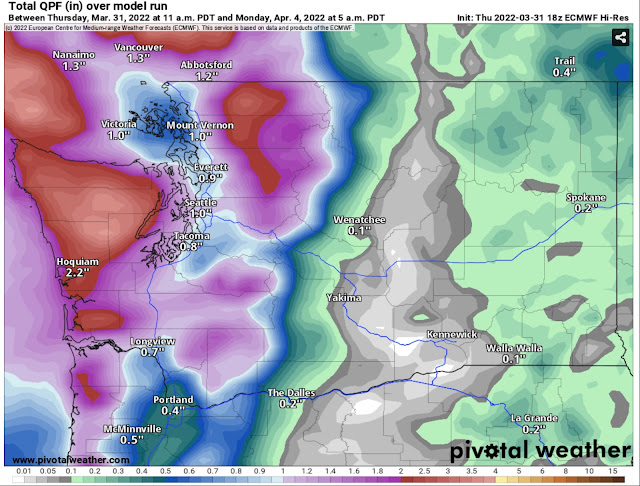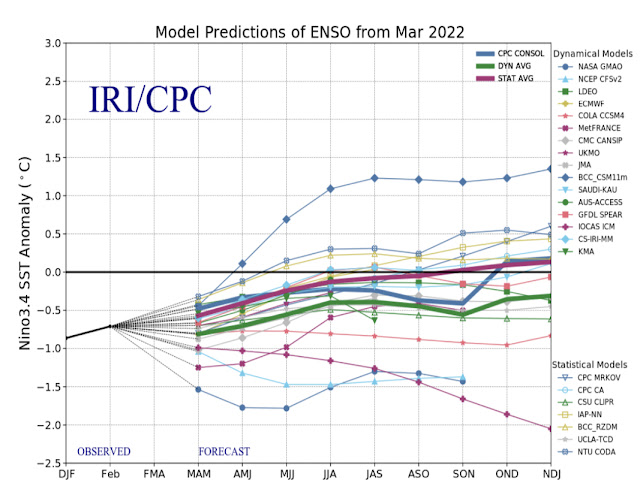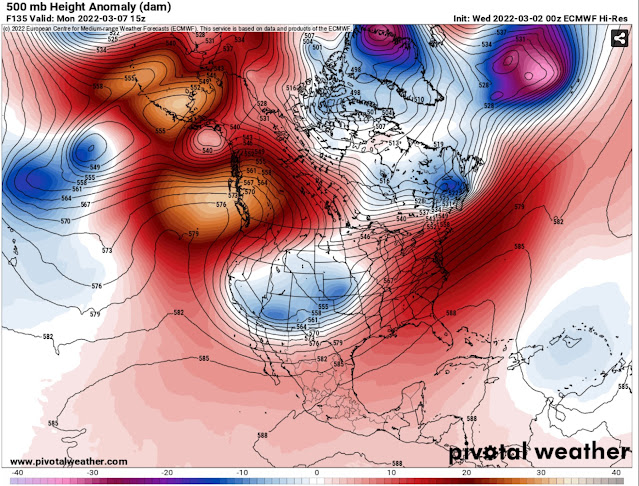FastCast—Friday, Apr. 1 to Thursday, Apr. 7:
On Sunday, active weather will return to Western Washington. On Friday and Saturday, expect partly to mostly cloudy conditions, with highs in the mid 50s and lows in the low 40s. Late on Sunday, rain will move back in to Western Washington. Expect rain to continue through Monday afternoon, totaling 0.75 to 1.25 inches of rain in the lowlands, with 2-3 inches on the coast. Additionally, with a Convergence Zone band over the North Sound (Seattle to Arlington areas), a windy day is expected on Monday to the south and north of that Convergence Zone. As of Thursday, forecasts show winds gusting up to 40-45 mph in the lowlands from late Sunday night to Monday evening. The Sunday-Monday system will bring colder than normal temperatures, with highs in the upper 40s to mid 50s and lows near 40. Also…expect 6-12 inches of snow at the passes. Then, as that system moves out, expect partly cloudy and drier conditions, with highs in the low 50s on Tuesday to the mid 60s on Thursday. Lows will be in the mid 30s on Wednesday morning and then will be in the low 40s. Stay tuned for more information about the active weather ahead!
—————————————————————
Continue reading the full blog below!
Active weather will return to the Pacific Northwest on Sunday. Rain will move in on Sunday afternoon. Expect 0.75 to 1.25 inches of rain around the lowlands, and 2-3 inches on the coast. See the European model forecast below for rain through 5 AM Monday (more is definitely possible later on Monday).
By midday Monday, rain will be confined to the Convergence Zone, between Seattle and Arlington.
Expect 6-12 inches of snow at the passes, with more possible in Convergence Zone bands. Higher elevations (5,000+ feet) will receive 12-30 inches of snow, substantial for April!
Through 5 AM Monday, expect gusts of 35-45 mph around the lowlands. Higher gusts, up to 40-50 mph, are possible through the day Monday.














































